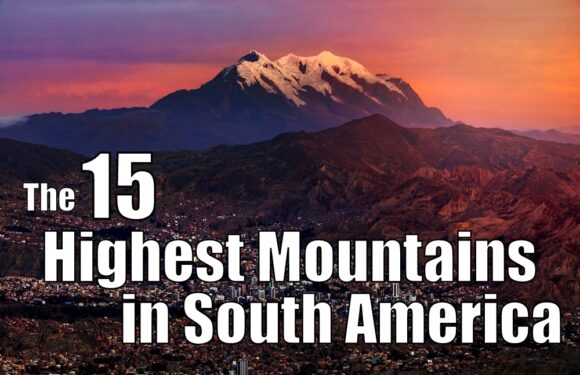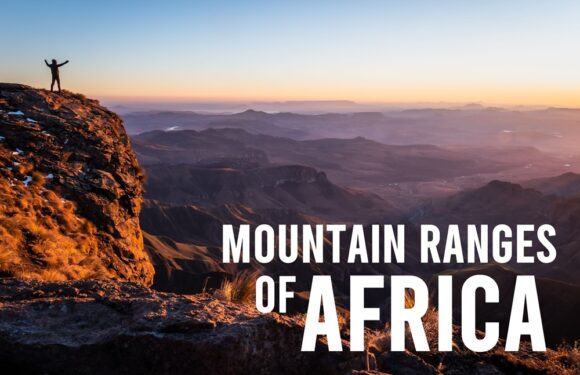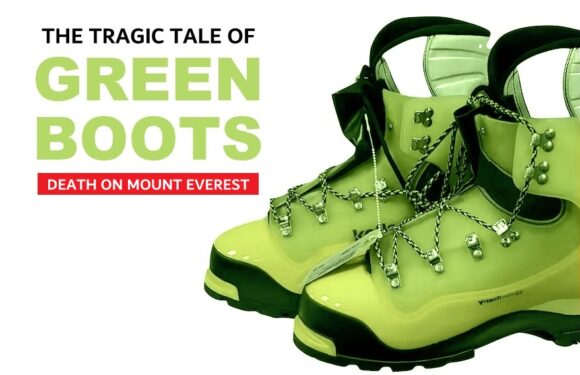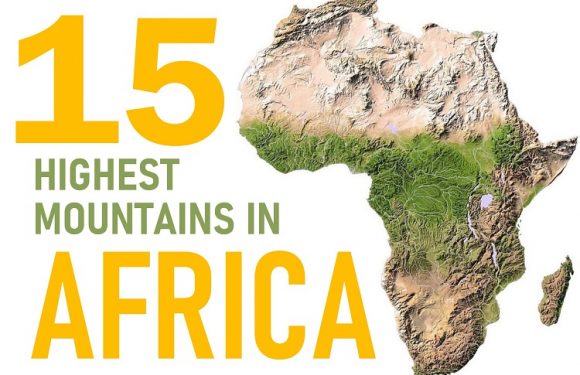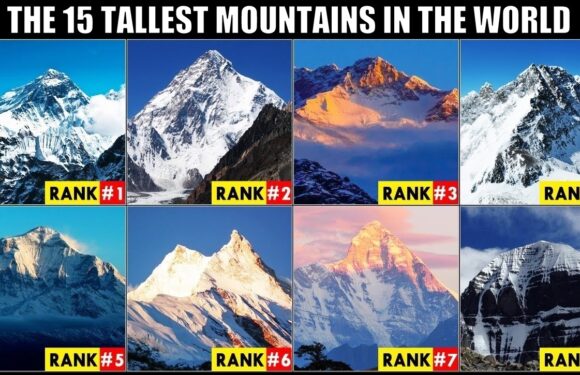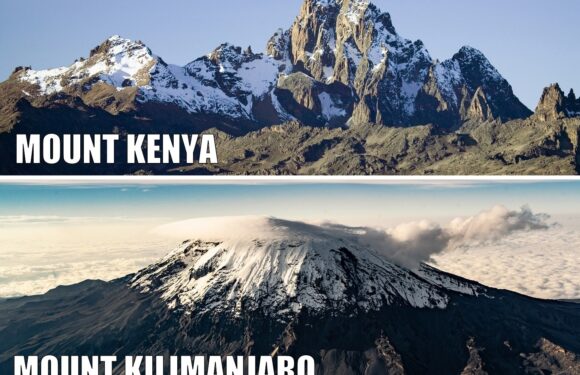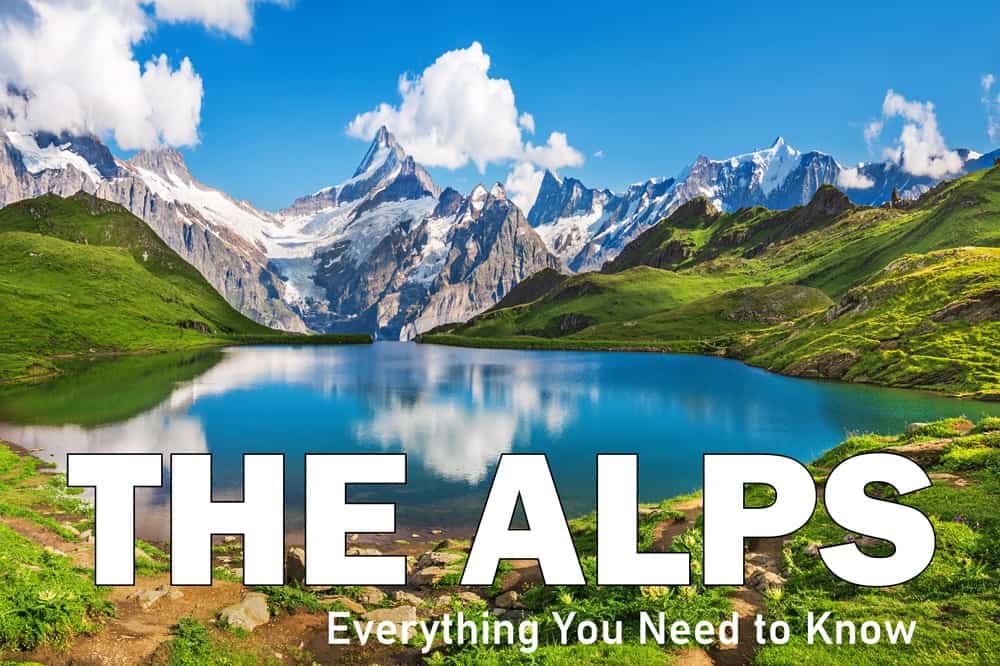
Where Are the Alps?
The Alps is one of the most famous ranges in Europe. It stretches east-west across several countries in an arc shape. (Note that there is a mountain range in New Zealand called the Southern Alps.)
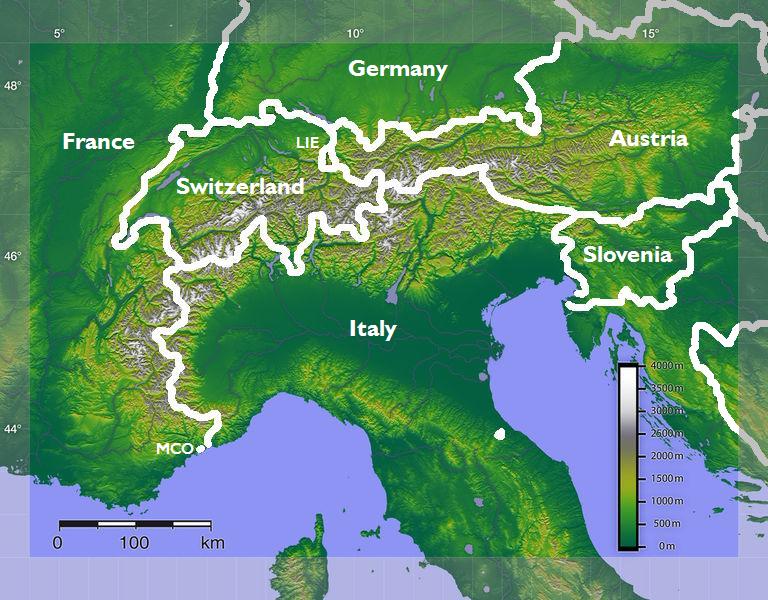
How Long Are the Alps?
The Alps span approximately 750 miles (1,200 kilometers) long. They vary in width, ranging from about 120 to 150 miles (200 to 240 kilometers) at their widest points.
How Big and Tall Are the Mountains in the Alps?
The Alps range is both broad and tall, offering a wide diversity of altitudes and terrains. Mont Blanc is the highest summit in the Alps, which is 15,774 feet (4,809 meters) tall. Other notable peaks include the Matterhorn, rising 14,692 feet (4,478 meters), and the Eiger, standing at 13,015 feet (3,970 meters).
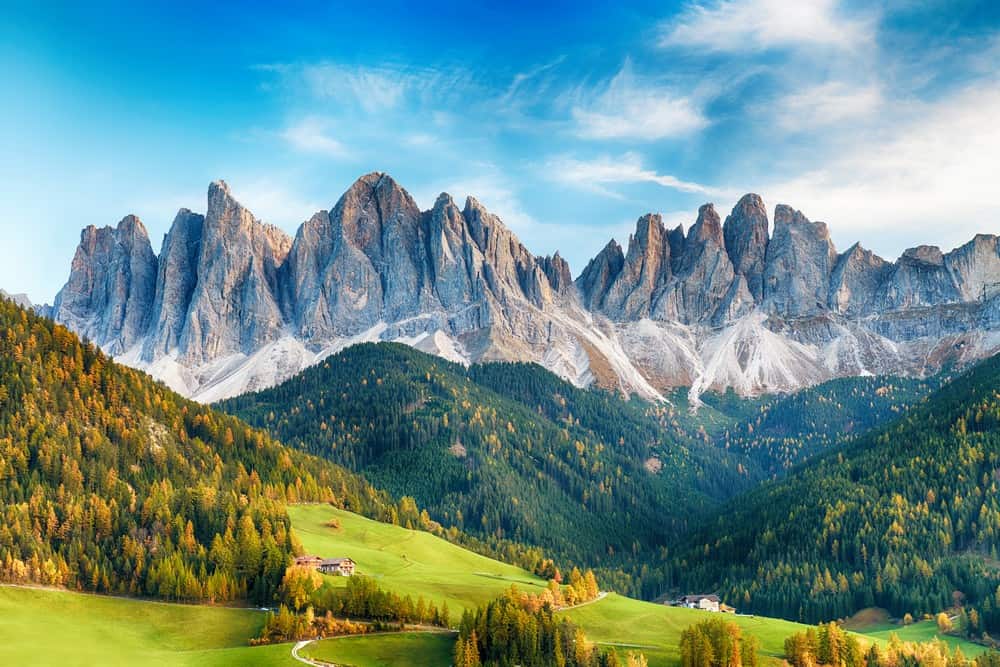
Additionally, the Alps encompass a multitude of peaks exceeding 10,000 feet (3,000 meters).
What Countries Do the Alps Span Across?
The Alps span across eight countries: France, Switzerland, Italy, Germany, Austria, Liechtenstein, Slovenia, and Monaco.
The Alps are distributed in these countries in the following way: Austria (28.7 % of the range’s area), Italy (27.2%), France (21.4 %), Switzerland (13.2 %), Germany (5.8 %), Slovenia (3.6 %), Liechtenstein (0.08%) and Monaco (0.001 %).
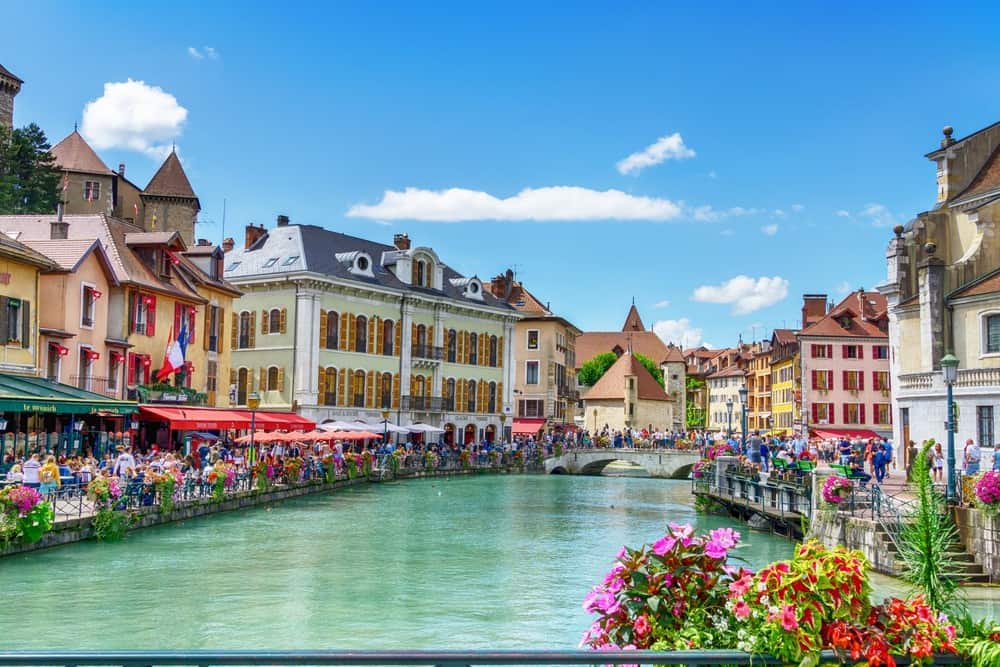
Here’s an overview of some of the main sections within the Alps:
- Swiss Alps: Known for their iconic snow-capped peaks, charming villages, and world-class ski resorts, the Swiss Alps form a significant part of the mountain range. It includes famous peaks like the Matterhorn and Jungfrau.
- French Alps: This section features the majestic Mont Blanc, the highest peak in the Alps. Popular destinations like Chamonix and Grenoble offer incredible skiing opportunities and picturesque villages.
- Italian Alps: The Italian Alps, with regions like the Dolomites and Aosta Valley, showcase a diverse landscape. The Dolomites, a UNESCO World Heritage Site, have unique, jagged limestone peaks.
- Bavarian Alps: This section, located in southern Germany, boasts scenic beauty with serene lakes, lush green valleys. It’s a haven for outdoor enthusiasts and opportunities to explore traditional Bavarian culture.
- Austrian Alps: Austria’s Alps features beautiful scenery, Alpine villages, and world-class ski resorts like St. Anton and Kitzbühel. The region is renowned for its hiking trails, lakes, and cultural experiences in cities like Innsbruck and Salzburg.
- Slovenian Alps: The Julian Alps in Slovenia is home to Triglav National Park, which showcases alpine meadows, lakes, and Slovenia’s highest peak, Mount Triglav.
- Southern Alps (Graian Alps, Pennine Alps, and others): Spanning across Italy, France, and Switzerland, the Southern Alps encompass various subranges. They feature notable peaks like Gran Paradiso and Monte Rosa, offering diverse landscapes and outdoor activities.
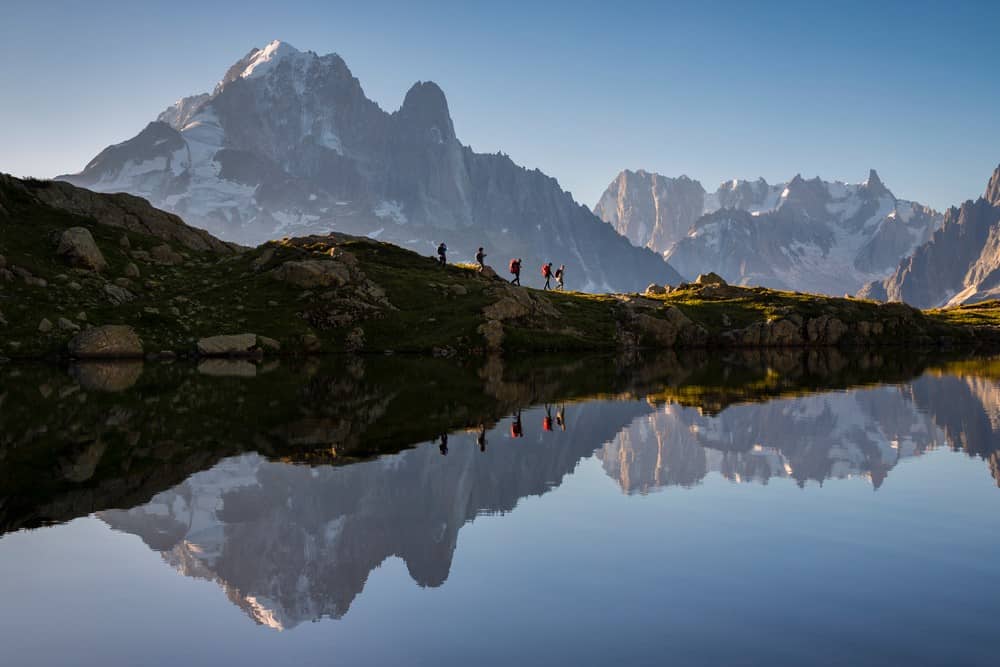
Where Do the Alps Begin and End?
The Alps start near the Mediterranean Sea in France and continue eastward across Italy, Switzerland, Austria, Germany, and Slovenia before ending near the Pannonian Basin in Austria.
What Does the Name Alps Mean?
The name “Alps” is believed to have originated from a Latin word “albus,” meaning “white.” It possibly refers to the snow-capped peaks of these mountains or the pale color of the rocks and glaciers, which give an impression of whiteness when seen from a distance. The word gradually transformed into “Alpes” in French and “Alpen” in German.
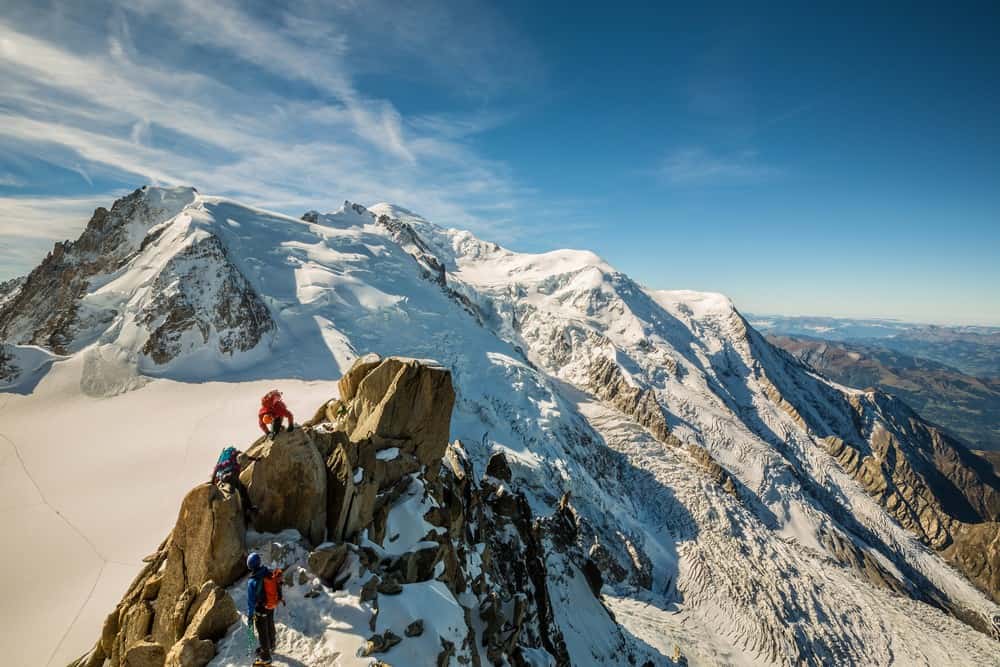
How Were the Alps Formed?
Roughly 65 million years ago, the Alps were formed as result of a collision between two tectonic plates, the African and Eurasian plates. Over millions of years, the movement of these tectonic plates continued, squeezing, folding and thrusting the rocks upward. The Alps are fold mountains.
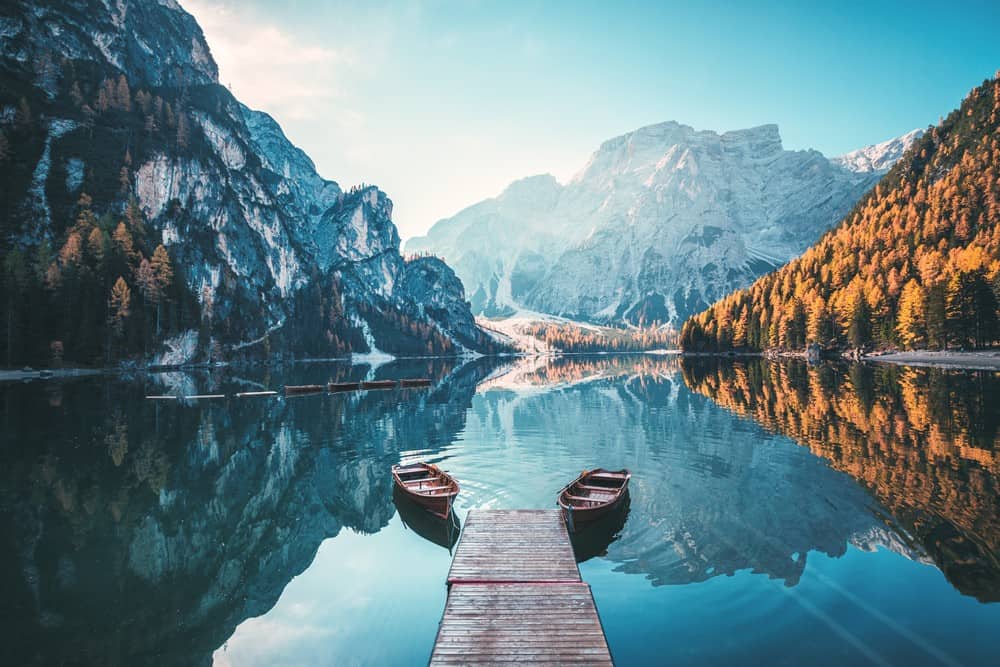
During the Pleistocene Epoch, which began around 2.6 million years ago, the Alps were subject to repeated glacial advances and retreats. The movement of these immense glaciers carved out valleys, smoothed out the mountain faces, and left behind iconic features like cirques, moraines, and U-shaped valleys.
What Are the Most Famous Destinations in the Alps?
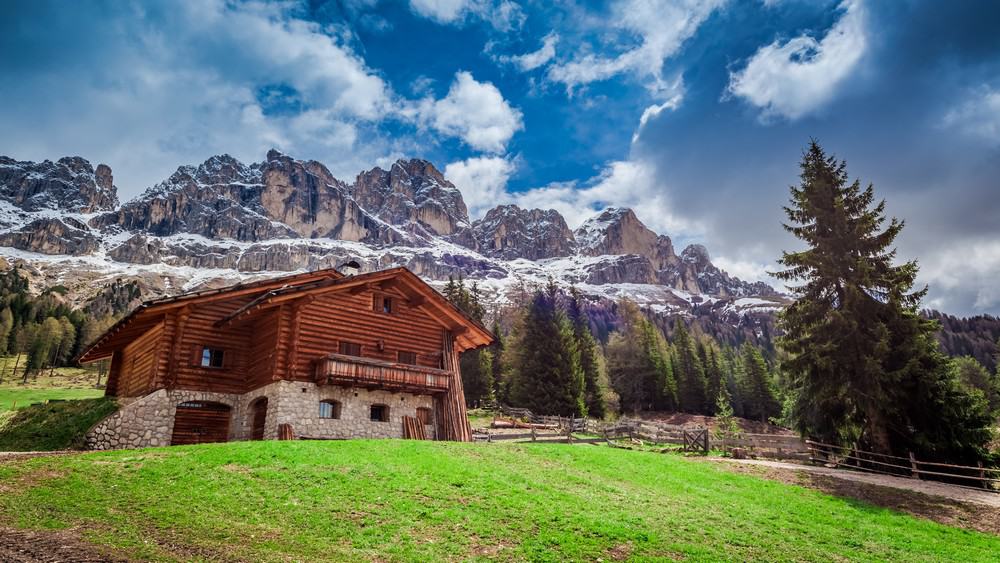
The Alps have many stunning destinations:
- Chamonix-Mont-Blanc, France: Renowned for its skiing, mountaineering, and the Aiguille du Midi cable car.
- Zermatt, Switzerland: Home to the iconic Matterhorn peak and a haven for winter sports enthusiasts.
- Innsbruck, Austria: A picturesque city surrounded by alpine landscapes, offering skiing, cultural attractions, and historical landmarks.
- Dolomites, Italy: A UNESCO World Heritage Site famous for its unique rock formations, hiking trails, and scenic beauty.
- Bavarian Alps, Germany: Featuring charming towns, scenic lakes, and the famous Neuschwanstein Castle.
- Julian Alps, Slovenia: Offering breathtaking hiking trails, emerald-green lakes, and the stunning Triglav National Park.
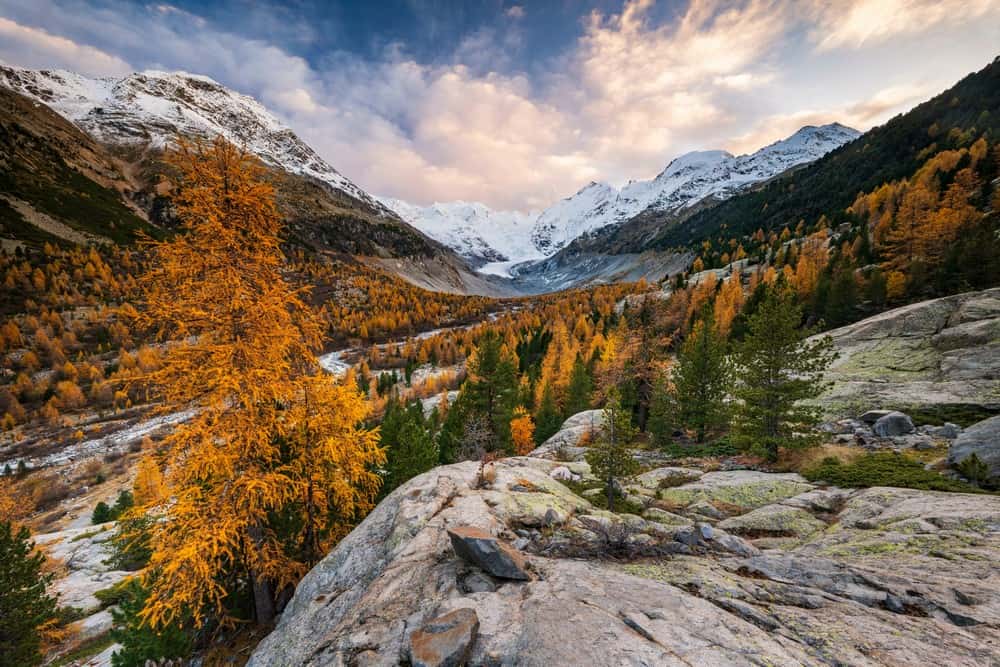
What Are Some Notable Peaks in the Alps?
The Alps have many notable peaks:
- Mont Blanc (France/Italy): The highest peak in the Alps and Western Europe at 15,774 feet (4,809 meters).
- Matterhorn (Switzerland/Italy): An iconic peak known for its challenging climbs and striking pyramid-like appearance at 14,692 feet (4,478 meters).
- Eiger (Switzerland): Famous for its notorious north face and considered one of the most challenging climbs in the Alps at 13,025 feet (3,970 meters).
- Jungfrau (Switzerland): Renowned for its scenic beauty and accessibility via the Jungfraujoch railway station at 13,642 feet (4,158 meters).
- Grossglockner (Austria): Austria’s highest peak, offering splendid vistas and standing at 12,461 feet (3,798 meters).
- Triglav (Slovenia): The highest peak in Slovenia and a symbol of national pride, reaching 9,396 feet (2,864 meters).
- Dufourspitze (Switzerland): The highest peak in Switzerland, part of the Monte Rosa massif, towering at 15,203 feet (4,634 meters).
- Weisshorn (Switzerland): Known for its distinct pyramidal shape, offering a challenging climb at 14,783 feet (4,506 meters).
- Grand Combin de Grafeneire (Switzerland): A large glaciated massif rising to 14,154 feet (4,314 meters) in the Swiss Alps.
- Zugspitze (Germany/Austria): Germany’s highest peak, offering panoramic views at 9,718 feet (2,962 meters
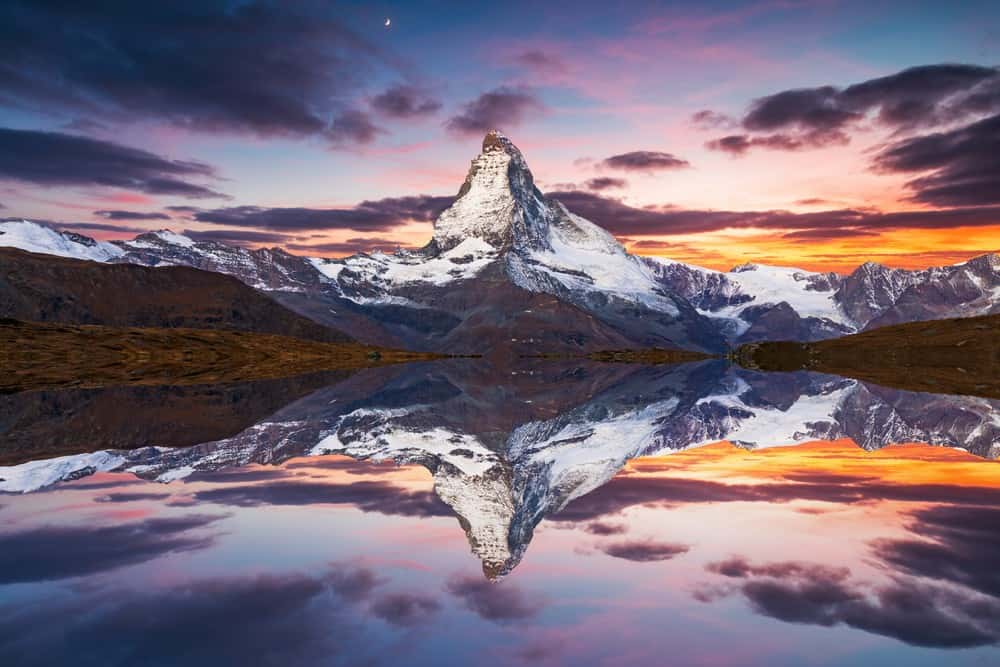
What Are the Best Hikes in the Alps?
Here is a list of the most coveted hikes in the Alps:
- Tour du Mont Blanc (France, Italy, Switzerland): A classic long-distance trek circumnavigating Mont Blanc, offering breathtaking views and diverse landscapes.
- Haute Route (France, Switzerland): Known for its challenging terrain and stunning scenery, this high-level trail connects Chamonix in France to Zermatt in Switzerland.
- The Dolomites Alta Via Routes (Italy): A network of multi-day trails offering panoramic views of the Dolomite peaks and scenic alpine meadows.
- Eiger Trail (Switzerland): A famous route providing spectacular views of the Eiger’s north face while trekking through alpine landscapes.
- The Stubai High Trail (Austria): A beautiful trek through the Stubai Alps, offering stunning vistas of glaciers, valleys, and peaks.
- The Walker’s Haute Route (France, Switzerland): A challenging but rewarding trek from Chamonix to Zermatt, passing through high mountain passes and stunning valleys.
- The Lechweg Trail (Austria): A picturesque hike following the Lech River, offering serene landscapes and cultural insights.
- Engadine Trail (Switzerland): A scenic route through the Engadine Valley, known for its picturesque lakes and alpine scenery.
- Traverse of the Gran Paradiso (Italy): A trek around Gran Paradiso, the only entirely Italian mountain over 4,000 meters, providing magnificent views.
- Alpe-Adria Trail (Austria, Italy, Slovenia): A long-distance hiking trail connecting the three regions through diverse landscapes and cultural experiences.
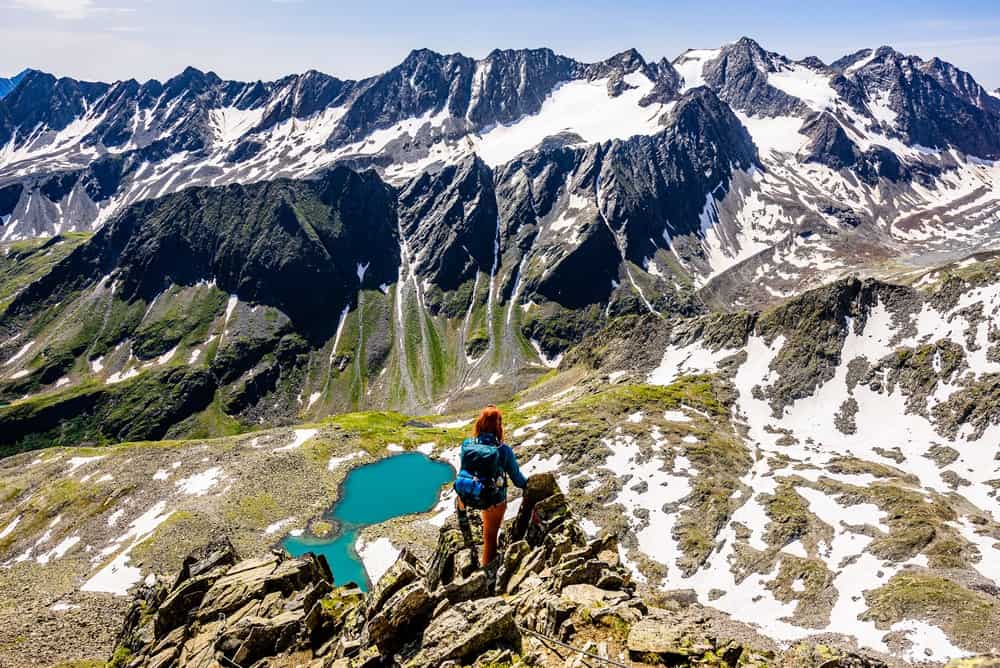
What is the Weather Like in the Alps?
The Alps have a dynamic climate, which is influenced by their elevation and geographical expanse. The weather in the Alps varies considerably based on altitude, seasons, and specific locations within the mountain range.
In general, the higher altitudes of the Alps experience cooler temperatures, even in the summer months. At elevations above 6,500 feet (2,000 meters), the weather tends to be cooler and more alpine-like, with temperatures often dropping below freezing at night, even during the warmer seasons.
Winters in the high Alps bring substantial snowfall, creating perfect conditions for skiing and other winter sports. Places like Chamonix in France or St. Moritz in Switzerland transform into winter wonderlands, attracting snow sports enthusiasts from across the globe.
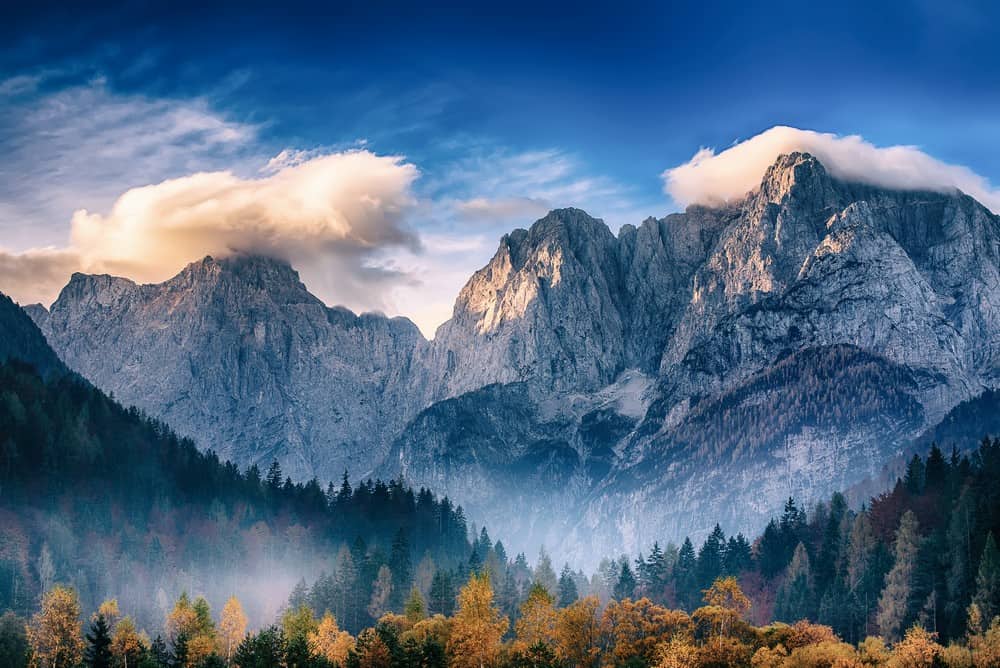
The lower elevations in the Alps enjoy more moderate temperatures in the summer, making it an ideal time for outdoor activities like hiking and mountaineering. Daytime temperatures in valleys and foothills typically range from 68°F to 86°F (20°C to 30°C), offering pleasant conditions for exploring the diverse flora and fauna or relaxing by the lakeshores. However, weather in the Alps can be unpredictable, with rapid changes in conditions, especially at higher altitudes, where sudden storms or snowfall can occur even in summer.
The region experiences distinct wet and dry seasons, with precipitation varying based on location and altitude. Generally, the western Alps, including areas of France, Switzerland, and Italy, receive more precipitation due to their proximity to the Atlantic Ocean, leading to a wetter climate with heavier rainfall. Meanwhile, the eastern Alps, covering regions of Austria and Slovenia, often experience a drier climate due to their distance from major bodies of water.
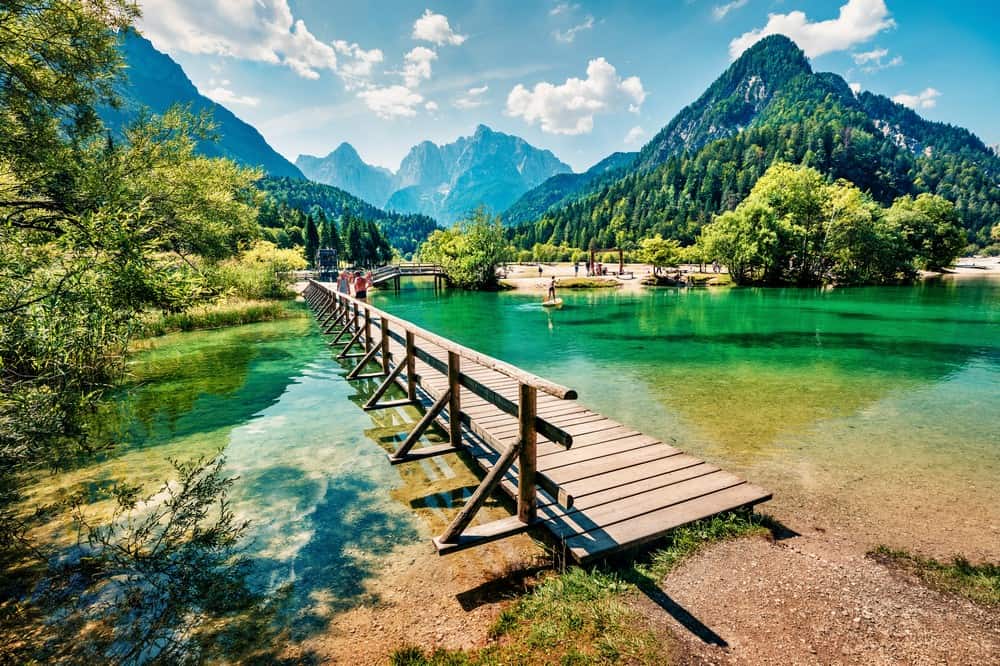
What Animals and Plants Live in the Alps?
The Alps are home to 30,000 species of animals, each adapted to survive in this terrain.
Among the larger mammals are the Alpine ibex, chamois, and red deer, which navigate the steep slopes with ease. Birds of prey like the golden eagle and bearded vulture soar above the peaks, while smaller creatures like marmots and mountain hares scuttle across the landscape. The Alpine salamander, a fascinating amphibian, can be found in damp, rocky areas, while the region’s rivers and streams are home to various trout species.
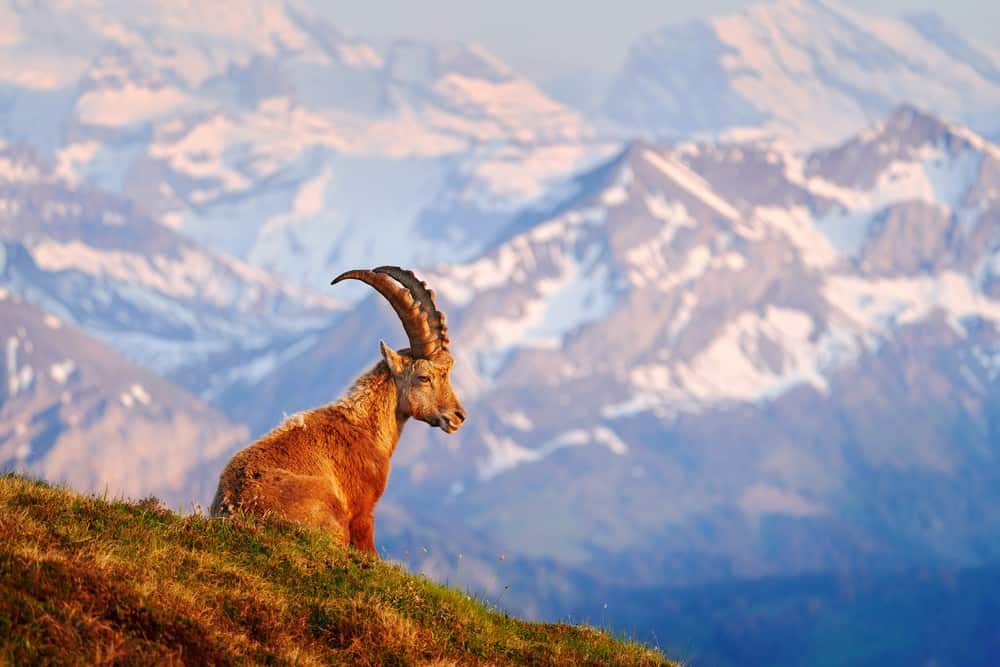
The Alps are home to 13,000 species of plants, many of which are native to the Alps.
One of the most iconic plants found here is the Edelweiss, a resilient and prized flower that adorns rocky slopes. The region’s diverse flora also includes Gentians, Saxifrages, Alpine Aster, and Alpine Forget-Me-Not, among many others. At lower altitudes, dense forests of coniferous trees such as spruce, fir, and pine dominate the landscape, while higher elevations reveal vibrant alpine meadows adorned with a stunning variety of wildflowers.
Who Lives in the Alps?
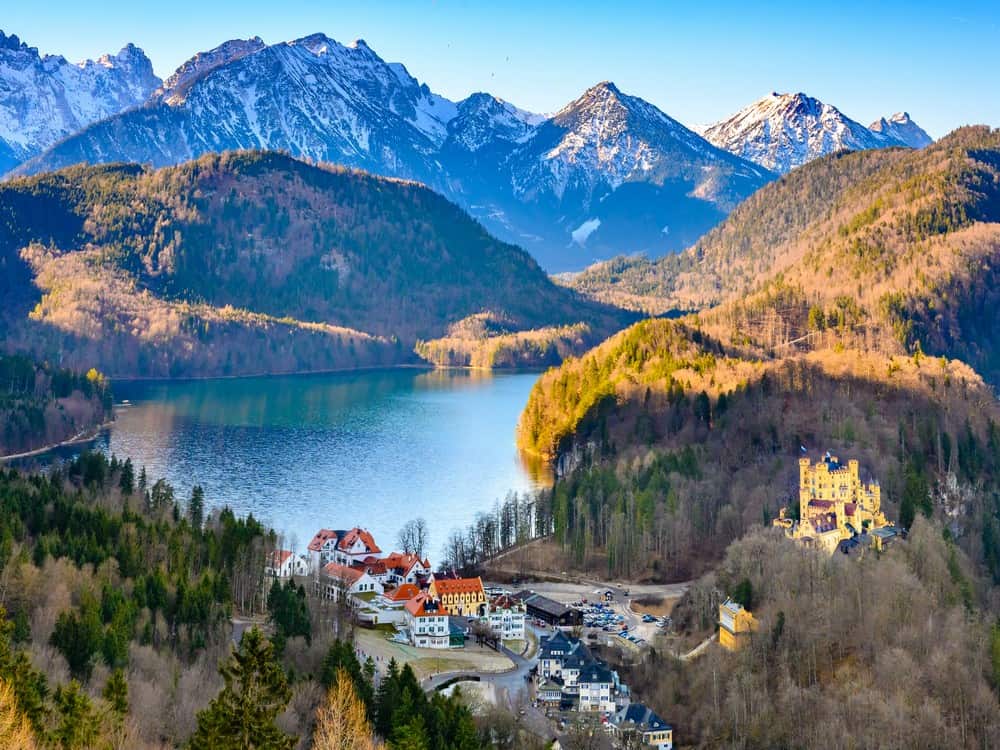
Historically, several indigenous groups thrived in the Alpine regions, including Celtic tribes like the Helvetii and Rhaetians. These ancient inhabitants lived in the valleys and highlands, engaged in agriculture, animal husbandry, and trade. Over centuries, the Alps saw influences from Roman conquests, which introduced Roman culture, language, and infrastructure to the region.
Today, the Alps are populated by a mix of communities from various countries, including Switzerland, France, Italy, Germany, Austria, and Slovenia. Residents of the Alps often have deep connections to their region, preserving traditional Alpine cultures and lifestyles while adapting to modernity. The mountainous terrain has shaped their livelihoods, with activities such as dairy farming, tourism, winter sports, and craftsmanship remaining significant parts of Alpine life. In addition to the native communities, the Alps attract a diverse array of visitors and expatriates drawn by the stunning landscapes, outdoor activities, and unique cultural heritage of the region.



















































